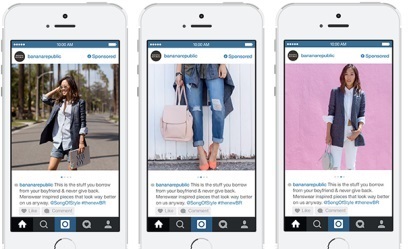More than one in three Instagram users have bought a fashion item they have discovered on the photo-sharing platform, according to new research.

According to new data from Instagram, European ‘fashion’ users post three times as often as the average user and boast 230% more followers – figures which make this group its most engaged segment of users.
And having posted, they’re constantly looking to see the reaction, checking their newsfeeds up to 15 times a day. They typically generate six times the number of impressions as an average user.
“They’re also ready to turn their passion for fashion into purchase,” noted Amy Cole, EMEA head of brand development at Instagram, “with one in three Instagrammers buying an item they’ve discovered on the platform.
“There is a huge opportunity for fashion brands and retailers to tell great brand stories and deliver real business results through Instagram,” she said, adding that “by combining a retailer’s understanding of their customers with our tools and understanding of people, we can make fashion personal again, but at scale”.

Eva Chen, head of fashion partnerships at Instagram, highlighted the need for brands using Instagram to focus on engagement rather than users: “It’s not the amount of followers you have, but the passion and engagement that people feel for a brand that matters most”.
Other “essential” advice included telling an authentic brand story, connecting with the Instagram fashion community, making greater use of video and creating a strong and consistent visual identity.
UK ‘fashion’ users followed more accounts (407) and claimed more followers (240) and feed impressions (2,229) than those anywhere else in Europe, although they registered the lowest average number of likes (68) in Instagram’s research.
Nick Fletcher, director of multichannel services, Rakuten Marketing, commented on the findings: “Instagram has created the perfect environment for fashion brands. It lets fashionistas and bloggers connect with consumers. They provide an endorsement and experience people don’t receive on the high street. It’s the ‘behind the scenes’ content at events like London Fashion Week, personalised stories and the relationships consumers can develop with third party influencers that is keeping people engaged with brands across the platform.
“Instagram’s findings show that social has evolved from being a product discovery platform to driving direct-response. Brand marketers need to be aware that consumers are increasingly happy to shop on social and invest in targeting their audiences with engaging content to utilise its role in the path to purchase fully.
“However, retailers cannot look at social in isolation. Consumers’ attention is becoming harder and harder to maintain so it’s crucial that brands use a multichannel data set to understand the combination of channels that equates to a consumer’s decision to buy. This ability to understand every point of influence is the only way to devise a successful marketing campaign in today’s retail environment.”
